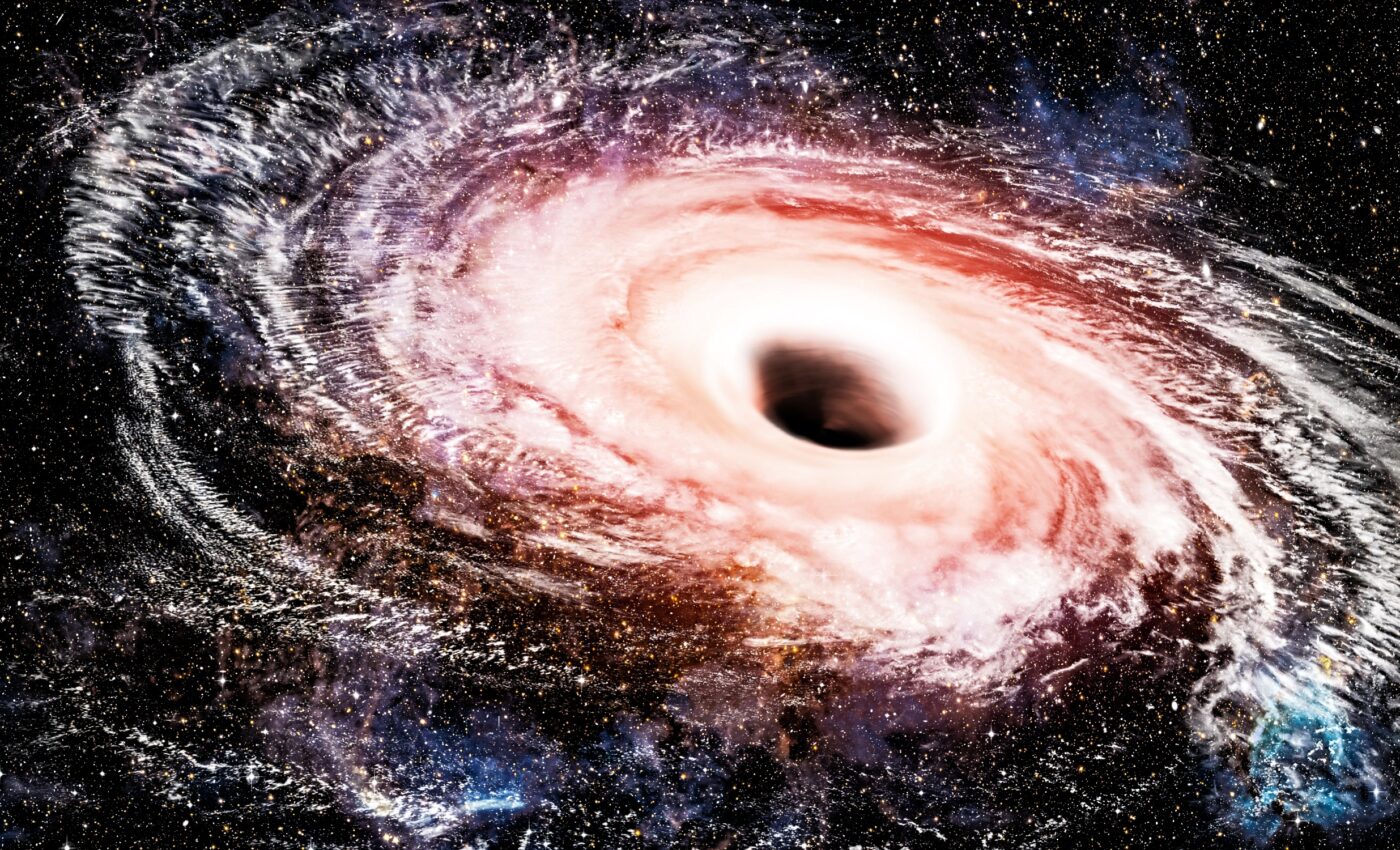
What would it be like to fall into a black hole?
Have you ever wondered what it’s like to be sucked into a black hole, never to return? These mysterious cosmic monsters are places where gravity bends the rules of the universe, trapping even light in their clutches. At the edge of a black hole lies a boundary called the event horizon – a point of no return. But what does it really look like to cross this threshold? Thanks to NASA‘s incredible new visualization, we can now take that terrifying plunge… without the actual danger.
Event horizon
The event horizon is the defining boundary of a black hole, marking the point beyond which nothing, not even light, can escape. It separates the black hole from the rest of the universe and acts as a one-way door. Crossing this threshold means being trapped forever in a realm of intense gravity.
In physics terms, the event horizon represents the surface surrounding a black hole, where the escape velocity exceeds the speed of light. The radius of this surface is known as the Schwarzschild radius for non-rotating black holes and depends on the black hole’s mass. Within this region, gravitational forces are so strong that even time itself slows down, a phenomenon called gravitational time dilation.
But what lies beyond the event horizon? At the very core of a black hole lies the singularity, where density becomes infinite and the laws of physics as we know them cease to operate. The intense gravitational forces stretch objects falling toward this singularity into long, thin shapes – a process called spaghettification.
Supercomputer simulation for black hole visualization
The creation of these remarkable black hole visualizations involved a dedicated team. Leading the team was Dr. Jeremy Schnittman, an astrophysicist at NASA’s Goddard Space Flight Center. The experts relied on the immense computational power of the Discover supercomputer. The supercomputer is housed at NASA’s Center for Climate Simulation.
This extraordinary computing muscle was necessary because simulating the behavior of matter and energy under the influence of a black hole’s incredibly strong gravity requires extremely complex calculations. “People often ask about this, and simulating these difficult-to-imagine processes helps me connect the mathematics of relativity to actual consequences in the real universe,” said Schnittman.
What happens when you fall in?
NASA’s simulation presents two distinct scenarios: crossing the event horizon, which determines your ultimate fate, or narrowly escaping the black hole’s immense gravitational pull. As you approach the black hole, the profound effects of Einstein’s theory of relativity become strikingly evident.
Light emitted by surrounding stars and the swirling accretion disk (a region of superheated gas around the black hole) undergoes severe warping and distortion. The closer you venture, the faster you are propelled, ultimately reaching speeds close to that of light.
If you cross the event horizon, there is no possibility of return. From the perspective of a distant observer, time would appear to slow down for you to the point where you seem frozen in place, never fully crossing. However, from your own perspective, the end would come swiftly.
“Once the camera crosses the horizon, its destruction due to the extreme gravitational forces is just 12.8 seconds away,” explained Schnittman. These tidal forces would cause an extreme stretching effect on any object.
The alternative scenario, while intense, doesn’t end in your demise. If you manage to orbit very close to the event horizon and escape, you would experience extreme time dilation. Your journey might seem like a matter of hours from your perspective, but those far from the black hole’s influence would have experienced a much longer passage of time.
Significance of black hole visualization
Black holes may hold a captivating presence in science fiction, but visualizations like NASA’s serve a crucial role in furthering our understanding of the very real and intricate scientific principles that govern these cosmic phenomena.
These simulations provide a valuable tool for making Einstein’s theory of relativity more concrete. They transform abstract concepts into a comprehensible experience. Remarkably, the visualizations show the profound effects that black holes have on their surroundings. This includes the warping of spacetime and the distortion of light.
The immense public fascination with black holes is understandable – their existence pushes the boundaries of our current knowledge and challenges our perception of reality. It’s no wonder that these captivating objects were featured prominently in the film ‘”Interstellar.”
Experiencing black hole virtually
NASA’s black hole visualization represents a remarkable leap in our ability to comprehend the awe-inspiring power of these cosmic giants. It provides an unprecedented opportunity to safely delve into the boundaries of known physics, offering us a virtual journey to the extremes of the universe.
Through these simulations, we can witness firsthand how gravity distorts spacetime. The images fundamentally alter our understanding of the laws that govern our reality. The visualizations reveal how light warps and time bends. They show how matter behaves in the presence of a black hole’s immense gravitational pull.
Video Credit: NASA Goddard
—–
Like what you read? Subscribe to our newsletter for engaging articles, exclusive content, and the latest updates.
Check us out on EarthSnap, a free app brought to you by Eric Ralls and Earth.com.
—–













